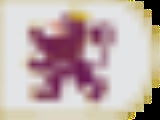
Kingdom of Asturias
Overview
Iberian Peninsula
The Iberian Peninsula , sometimes called Iberia, is located in the extreme southwest of Europe and includes the modern-day sovereign states of Spain, Portugal and Andorra, as well as the British Overseas Territory of Gibraltar...
founded in 718 by Visigothic nobles under the leadership of Pelagius of Asturias. It was the first Christian
Christianity
Christianity is a monotheistic religion based on the life and teachings of Jesus as presented in canonical gospels and other New Testament writings...
political entity established following the collapse of the Visigothic kingdom
Visigothic Kingdom
The Visigothic Kingdom was a kingdom which occupied southwestern France and the Iberian Peninsula from the 5th to 8th century AD. One of the Germanic successor states to the Western Roman Empire, it was originally created by the settlement of the Visigoths under King Wallia in the province of...
after Islamic conquest of Hispania
Umayyad conquest of Hispania
The Umayyad conquest of Hispania is the initial Islamic Ummayad Caliphate's conquest, between 711 and 718, of the Christian Visigothic Kingdom of Hispania, centered in the Iberian Peninsula, which was known to them under the Arabic name al-Andalus....
. In 722, Pelagius subsequently defeated the Umayyad Caliphate at the Battle of Covadonga
Battle of Covadonga
The Battle of Covadonga was the first major victory by a Christian military force in Iberia following the Muslim Moors' conquest of that region in 711...
, in what is usually regarded as the beginning of the Reconquista
Reconquista
The Reconquista was a period of almost 800 years in the Middle Ages during which several Christian kingdoms succeeded in retaking the Muslim-controlled areas of the Iberian Peninsula broadly known as Al-Andalus...
. The kingdom lasted until 925, when Fruela II
Fruela II of León
Fruela II was the King of Asturias from the death of his father, Alfonso III of Asturias, in 910 to his own death. When his father died, the kingdom was divided, with the third son, Fruela, taking the original portion ; the second, Ordoño, taking Galicia; and the eldest, García, taking León...
became King of León.
The birthplace of the Asturian kingdom was the western and central territory of the Cantabrian Mountains
Cantabrian Mountains
The Cantabrian Mountains or Cantabrian Range are one of the main systems of mountain ranges in Spain.They extend for more than approximately 180 miles across northern Spain, from the western limit of the Pyrenees to the edges of the Galician Massif close to Galicia, along the coast of the...
, particularly the Picos de Europa
Picos de Europa
The Picos de Europa is a range of mountains 20 km inland from the northern coast of Spain, located in the Autonomous Communities of Asturias, Cantabria and Castile and León, forming part of the Cantabrian Mountains...
and the central area of Asturias.

